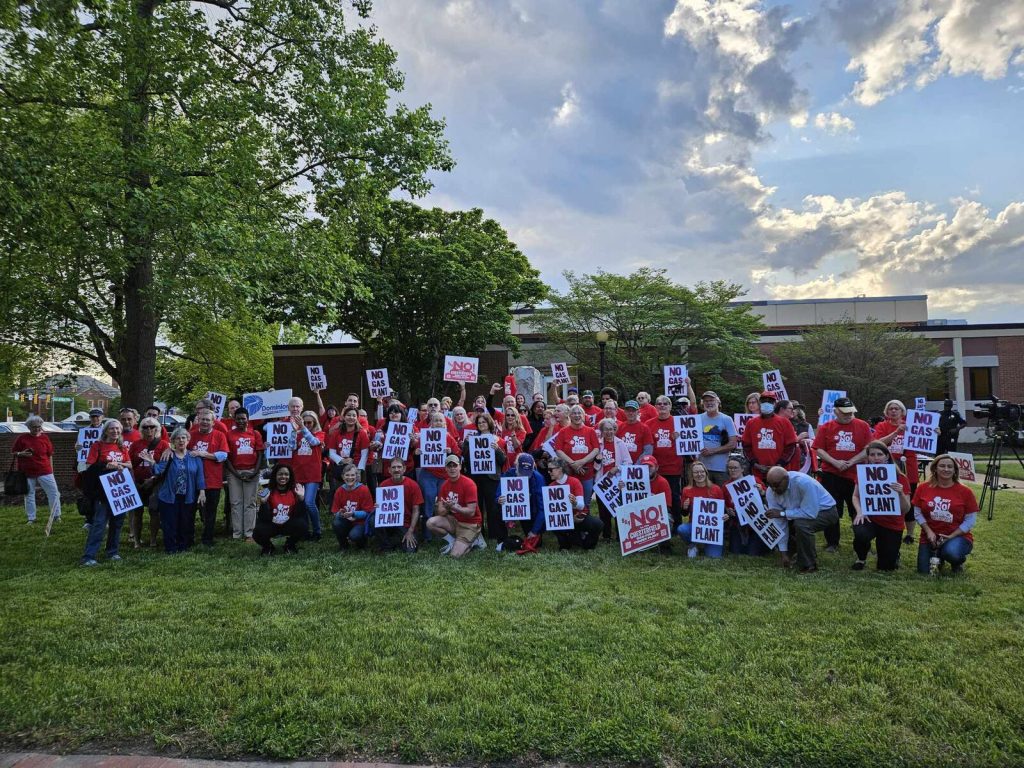The Long Trail Back: Public Lands Recovery After Hurricane Helene
Central and Southern Appalachia is rich with public lands and waterways cherished by residents and visitors. From family camping trips at Roan Mountain State Park to scenic cruises along the Blue Ridge Parkway, the region is brimming with beautiful trails, parks and rivers where people make memories that they never forget.
When Hurricane Helene swept through the region, many of these beloved natural areas were devastated, resulting in billions of dollars in damages and countless hours of recovery work. Landslides wiped out roadways and bridges, downed trees blocked trails and debris washed into rivers.
Thanks to dedicated federal, state and local partners and untold numbers of volunteers, many public lands have reopened. Yet ten months after the storm, there are still areas that remain fully or partially closed due to ongoing work and concerns for visitor safety.
Public lands representatives and advocates are encouraged by the substantial progress made to date. Simultaneously, current and looming federal budget cuts and policy changes have made already arduous land restoration work even more challenging — a reality that may continue for the foreseeable future.

Current state of public lands recovery
Public lands are outdoor areas, such as forests, parks, trails or lakes, that are managed by federal, state and local agencies like the National Park Service, U.S. Forest Service, North Carolina Division of Parks and Recreation or towns and county governments.
Hurricane Helene severely damaged national park and forest lands, including Great Smoky Mountains National Park’s Cataloochee Valley — portions of which reopened in April after extensive restoration work — and the Blue Ridge Parkway.
“By far the most heavily impacted park is the Blue Ridge Parkway,” says Jeff Hunter, Southern Appalachian director of the National Parks Conservation Association, a nonprofit that advocates for the national parks system.
Much of the scenic 469-mile route has reopened, including all Virginia roadway. But as of July, 157 miles remain closed in North Carolina due to extensive damage from at least 57 landslides, widespread downed trees and other causes, according to the park service. The park service has not announced a definitive timeline for project completion and reopening.
Beyond the Blue Ridge Parkway, significant recovery work continues in Western North Carolina, where the storm damaged more than 190,000 acres of national forest land, according to the U.S. Forest Service.
Dana Hodde, public affairs specialist for the National Forest in North Carolina, states that the agency and its partners have cleared 227 miles of trails in the particularly hard-hit Pisgah National Forest Appalachian Ranger District, which accounts for 70% of the district’s trails.
“Disaster recovery is often a lengthy process involving review, planning and the rebuilding of resilient forests and infrastructure,” Hodde explains.
When reopening areas to the public, Hodde explains that the agency considers several factors, including “search and rescue access, wildfire risks, public safety and coordination with other agencies and partners.”
“It is critical that visitors respect closures,” Hodde says. “These areas may be hazardous, and entering can divert valuable time and resources from recovery efforts.”
In Virginia, the Forest Service manages the upper portion of the popular Virginia Creeper Trail, which falls within the Mount Rogers National Recreation Area in the George Washington and Jefferson National Forests. In June, the agency announced that initial debris removal work had begun, although a timeline for project completion remains uncertain. The lower portion of the trail is open.
Hurricane Helene closed several state parks across North Carolina, Tennessee and Virginia. As of mid-July, the majority have reopened entirely or with partial closures.
Only one, Mount Mitchell State Park in Yancey County, North Carolina, remains fully closed until further notice. David Crockett Birthplace State Park in Limestone, Tennessee, is closed, but it recently reopened its Crockett Shoals Overlook Trail. That park is also holding meetings to inform the public about its future, and visitors are encouraged to verify closure information before arrival.
Public lands highlight: Caution, detours and closures along the Appalachian Trail
The Appalachian Trail traverses through 14 states, six National Park Service regions, eight national forests and many other national and state public lands along its 2,197.4-mile route, according to the Appalachian Trail Conservancy, the nonprofit that manages the trail with the National Park Service and other public and private sector partners. Sections of this National Scenic Trail along the Tennessee-North Carolina border were hit particularly hard by Hurricane Helene.
“It took a tremendous amount of effort,” says Ann Simonelli, director of communications at ATC, about the work of volunteers, professional crews, federal agencies and many others to “get the trail to where it is today.”
Roughly five miles of the Appalachian Trail remain closed by the Forest Service at Iron Mountain Gap in North Carolina for continued storm debris removal. ATC shares that the anticipated completion timeframe for this salvage logging operation, which involves removing fallen trees for timber sales, is fall 2025.
“Once that project is done, then the ATC and the trail clubs will go in with volunteers to help to reestablish the trackway,” says Simonelli, emphasizing the need for trail rebuilding work due to the impact of the heavy machinery and logging equipment.

In the meantime, hikers can use the Iron Mountain Gap detour route. Hikers will also need to use the Nolichucky River detour after Hurricane Helene destroyed the Chestoa Pike Bridge in Erwin, Tennessee.
Simonelli explains that, regardless of official closures and detours, open does not mean “smooth sailing” and that hikers should remain cautious and pay attention to the latest trail conditions.
“There are sections of the trail that are open, but they might be more challenging to navigate because of the damage left by Helene,” Simonelli says.
Simonelli relays that the ATC is hearing a lot of gratitude from 2025 hikers as they travel through damaged sections of the Appalachian Trail that are now back in operation thanks to the support of dedicated volunteers and paid crews.
“Every single tree had to be cut by someone,” emphasizes Simonelli, highlighting how complicated it can be to clear hundreds of downed trees.
“It’s very humbling to see how far and how much work and how much commitment people have put into this beloved natural resource,” continues Simonelli.
Community partnerships key to recovery progress
Many community, nonprofit and volunteer partners have stepped up to assist federal and state agencies in recovery efforts, says a Forest Service employee who spoke on the condition of anonymity due to fear of retaliation for speaking candidly.
“It’s a small miracle,” the source says about the number of trails cleared, recreation areas reopened and other restoration work, highlighting that the work completed to date, with assistance from local partners, serves as a “point of pride” for forest workers.
“I think it speaks to our dedication as public employees and our willingness to be self-sacrificing for the mission of the agency,” they continue.
In North Carolina, Wild South, a nonprofit dedicated to protecting public lands, has logged approximately 9,000 hours of recovery work and recruited 400 volunteers for storm recovery efforts. Initially, their work involved damage assessment in partnership with the Forest Service, explains Kevin Massey, executive director of Wild South.
“That was a lot harder than it sounds,” Massey says. “Access was difficult, with roads cut by landslides, trails buried under thousands of trees or washed away by floods or landslides. What’s interesting is how quickly we were able to accomplish the task.”
Thanks to existing relationships with community organizations, Forest Service personnel in the Grandfather Ranger District of Pisgah National Forest were able to survey nearly 300 miles of trails in just a few weeks, explains Massey.
“Even seasoned sawyers have been challenged during recovery from Helene,” Massey says. “The hurricane twisted and bent and piled trees in ways that most sawyers have not experienced.”
For river recovery, the nonprofit MountainTrue is collaborating with federal and state agencies, as well as local volunteers, to clear debris from the French Broad, Watauga, Green and Broad rivers in North Carolina and Tennessee.

“Where the storm was most heavily damaging, we’ve definitely diverted resources toward trying to do more [work] related to clean-up or repairs or water quality,” says Jack Henderson, French Broad paddle trail manager at MountainTrue, who has been a driving force in coordinating river clean-up efforts before and after Hurricane Helene.
Since the storm, MountainTrue has received a “groundswell of interest” from volunteers who want to help, Henderson says. To date, the nonprofit has organized 64 clean-up days that included 1,100 volunteers who have removed 275,000 pounds of garbage. MountainTrue was also able to hire paid work crews who have been averaging around 8,000 pounds of garbage removal each week since March. In July, the nonprofit announced a $10 million partnership with the state of North Carolina to hire more paid cleanup workers and grow its network of volunteers.
‘Chaos across the board’
Looking ahead, long-term wildfire risks from downed trees, coupled with worries about the scale of salvage logging and the rise of invasive species on disturbed lands, are causes for concern. But beyond these ecological risk factors, other critical threats are coming from inside the house: the federal government.
From significant reductions in agency staffing to environmentally antagonistic bills in Congress, some public land advocates are apprehensive about what the future holds for public lands and their continued restoration after Hurricane Helene.
“It’s just chaos across the board,” says the anonymous Forest Service employee, emphasizing that there is little stability or direction from the top of the federal agency down to regional leadership.
The source’s program lost a majority of its staff during the mass federal probationary employee firings in February. After a court injunction blocked these firings, some Forest Service employees were reinstated. But the damage was done. The anonymous employee explains that changes in staffing are a part of government work, but what they haven’t seen before is this “deeply insulting means of firing employees.”
“[The fired employees] were out there, day one, responding to Hurricane Helene in the most dangerous conditions you can imagine, and they were treated incredibly poorly,” the source says. “If all of that was not overturned, then I would have probably quit. It was so shameful.”
Overall, their district lost roughly 40% of its staff to federal buyouts. Some of those essential administrative employees had been with the agency for decades.
“There was a really high loss of institutional knowledge when these departures would happen so quickly,” the source says. The remaining employees, even those already overburdened with high-level Helene recovery priorities, have had to share administrative duties like contract procurement. In addition, new restrictions made it the responsibility of a random selection of staff in emergency management roles to handle all purchases for the district, even buying gas for chainsaws and cleaning supplies — a move the employee criticized as hampering efficiency.
In early July, the U.S. Supreme Court lifted a lower court injunction that had paused mass terminations of federal workers. The Forest Service had not initiated new mass firings as of press time in July.
The Forest Service employee shared their perspective that, moving forward, the biggest challenge facing public lands recovery is the mental health of those tasked with doing the grueling, ongoing work, all while losing staff and navigating ever-changing federal policies.
“We will continue to lose people because of how bad morale is,” the employee warns.
There are ways for members of the public to help. To support protected public spaces, the National Park Conservation Association’s Jeff Hunter encourages people to consider “rolling up their sleeves and volunteering.” Additionally, he recommends that people become “storytellers” to their elected officials about why these areas are so important to them.
“I would ask people to be really specific [with members of Congress] about why parks are important to them,” Hunter advises.

Related Articles
Latest News
More Stories

Leave a comment
Your email address will not be published. Required fields are marked *





Leave a Comment